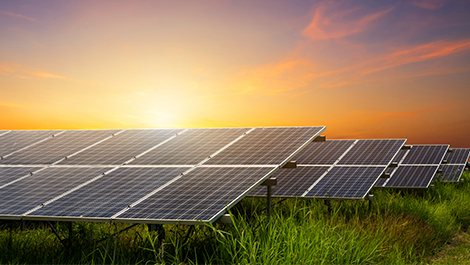Syllabus GS 3: Environment
Context:
Recently, Union Minister of Commerce and Industry Piyush Goyal stated that India achieves 4,000% increase in installed solar capacity.
More on News
- Country’s overall renewable energy capacity stands at 227 gigawatts.
- India may be the first G20 nation to have met its Nationally Determined Contributions (NDCs) under the Paris Agreement.
- Pali village in J&K has become India’s first carbon neutral panchayat using solar energy.
- Also, where the IESW held, called Yashobhoomi is good example of sustainability. It has solar panels on roof, wastewater treatment plant and energy efficient infrastructure.
India’s Renewable Energy Push
- In the last decade India’s manufacturing capacity for solar photovoltaic modules has risen 38 times, and for photovoltaic cells, it has increased 21 times.
- India has set a target to achieve 500 GW of installed non-fossil energy capacity by 2030 under its NDCs to the United Nations Framework Convention on Climate Change.
- Non-fossil fuel sources now contribute 235.7 GW (49 per cent), including 226.9 GW of renewable energy and 8.8 GW of nuclear energy.
- PM Kusum Yojana helps farmers by promoting the use of solar pumps. PM Surya Ghar Yojana aims to equip 1 crore household with solar rooftop panels.
- India wants to produce 10 million tonnes of green hydrogen and build electrolyser capacity of 60 to 100 GW under green hydrogen mission.
Building the Future: Batteries, Storage, and Innovation
- Storage technologies like batteries, pump storage, hydro storage and geothermal are very important to meet India’s future energy demand.
- India’s battery energy storage system capacity which currently stands at a modest 205 megawatts (MW) or approximately 506 megawatt-hours (MWh).
- However, starting from 2026-2027 India is targeting to increase the capacities to around 74 gigawatts (GW) by 2031-32.
- Govt. launched production Linked Incentive (PLI) programme to boost manufacturing of Advanced Chemistry Cells (ACC).
- Recently cabinet approved ₹ 1 lakh crore innovation fund for research next- generation battery chemistries, solid-state and hybrid storage technologies and circular supply chains.
Strengthening Supply Chains for Sustainable Growth
- India has to focus on four-pronged approach:
- Targeted innovation
- Infrastructure development
- Supply chain resilience
- Holistic value chain growth.
- To achieve self-reliance in the energy sector, it is important to reduce dependence on particular geographies and adopt new technologies.
- We have to cover everything from raw material, semiconductors, management systems and recycling to build a strong and self-reliant clean energy system.
- It requires partnerships among industry players, researchers, and policymakers to make this vision a reality.
India Energy Storage Week: A Step Towards Net Zero
- India Energy Storage Week (IESW) is premier industry, annual event which focused on advancing energy storage, e-mobility, battery manufacturing, and green hydrogen.
- It brought together global leaders, policymakers, researchers, and industry experts to discuss new innovations and policies needed for India’s energy transition.
- It promotes dialogue, partnership, R&D, skill development, and technology showcase aligned with national energy goals.


